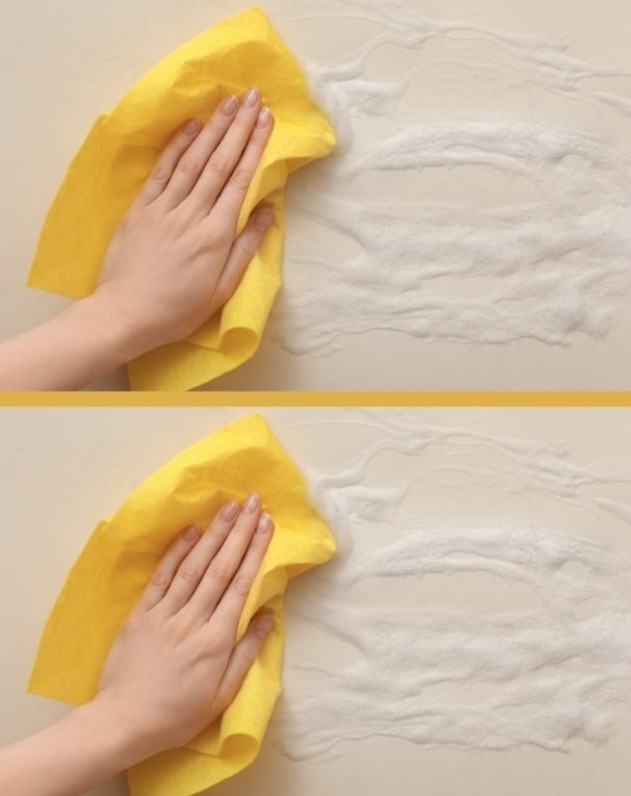Oil stains on kitchen walls can be a persistent nuisance, often resisting conventional cleaning methods and leaving behind unsightly marks. Whether it’s splatters from cooking or residue buildup over time, these stains can detract from the appearance of your kitchen.
But fear not! With a few simple homemade solutions, you can bid farewell to those stubborn oil stains and restore your kitchen walls to their pristine condition. Let’s explore some effective techniques to remove oil stains using everyday ingredients found in your pantry.
Hot Vinegar Method: To begin, don your protective gloves to shield your hands during the cleaning process. Using absorbent paper, gently blot away any excess oil from the surface of the wall. This step is crucial as it helps to remove the superficial layer of oil, allowing the cleaning solution to penetrate deeper. Next, heat up 1-2 cups of white vinegar in a pot until it’s hot but not boiling. Vinegar is a natural degreaser and effectively breaks down oil stains. Dip a clean cloth into the hot vinegar and carefully wipe it over the oil stains on the wall. The acidity of the vinegar helps to emulsify the oil, making it easier to lift off the surface.
Be sure to work in small sections, focusing on one area at a time. Once you’ve wiped the affected area, rinse it thoroughly with hot water using another clean cloth. This step helps to remove any residual vinegar and loosened oil. Finally, dry the wall with a third clean cloth. For stubborn stains, you may need to repeat the process, but be cautious not to damage the paint with excessive use of vinegar.
Lemon Method: Another effective way to tackle oil stains is with the power of lemon. Start by squeezing the juice of one lemon into a container. Lemon juice contains citric acid, which acts as a natural bleaching agent and helps to break down grease and grime. Wet a cloth in the lemon juice and gently rub it over the oil stains for a few minutes.
You’ll notice the stains gradually lighten as the lemon juice works its magic. Lemon also leaves behind a fresh, citrusy scent, making it a pleasant alternative to harsh chemical cleaners. Once you’ve treated the area, finish by wiping it with a dry cloth to remove any excess lemon juice. Keep in mind that this method is most effective on white walls, as colored walls may risk discoloration from the acidic lemon juice.
For Complete Cooking STEPS Please Head On Over To Next Page Or Open button (>) and don’t forget to SHARE with your Facebook friends
ADVERTISEMENT







